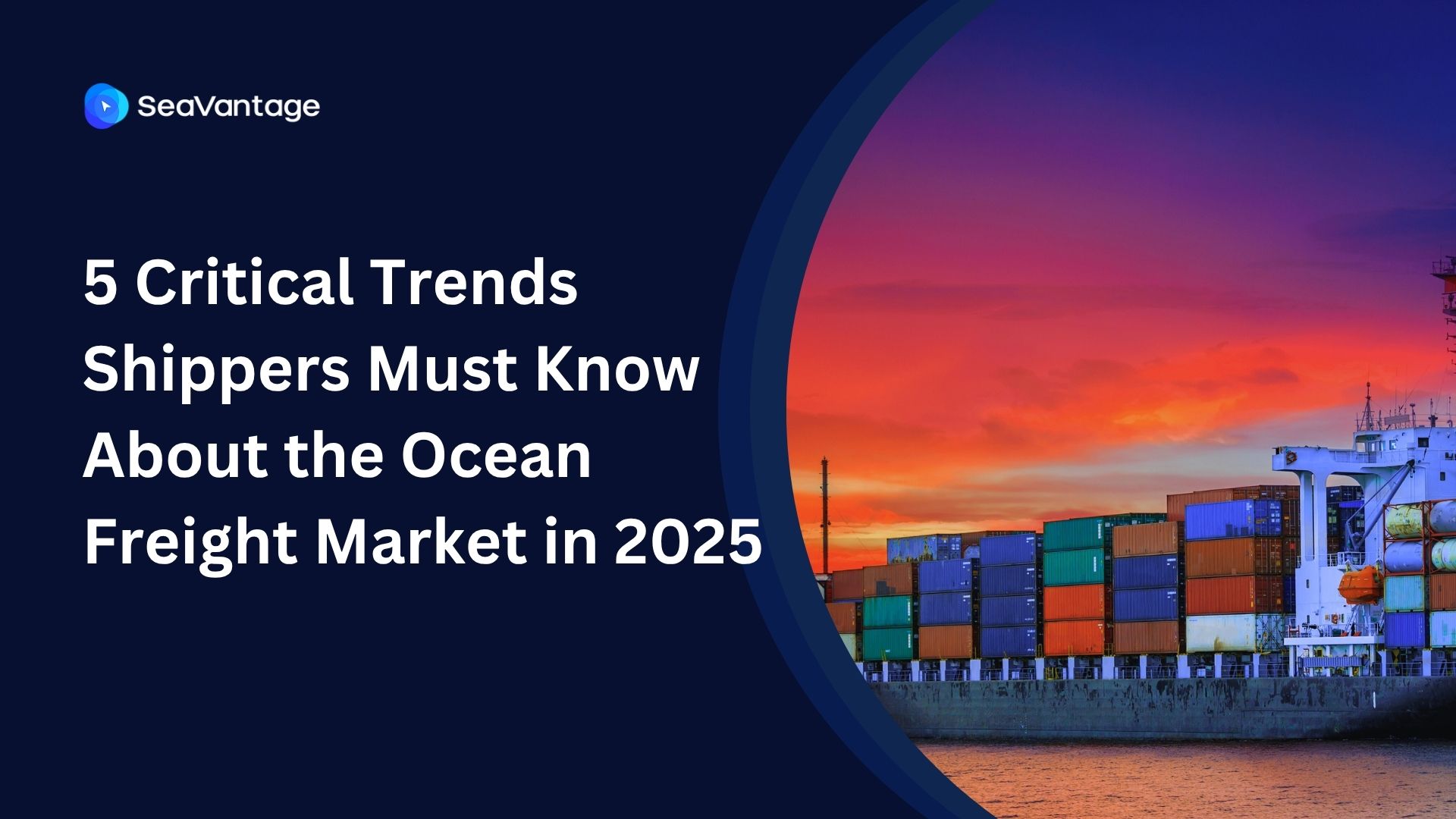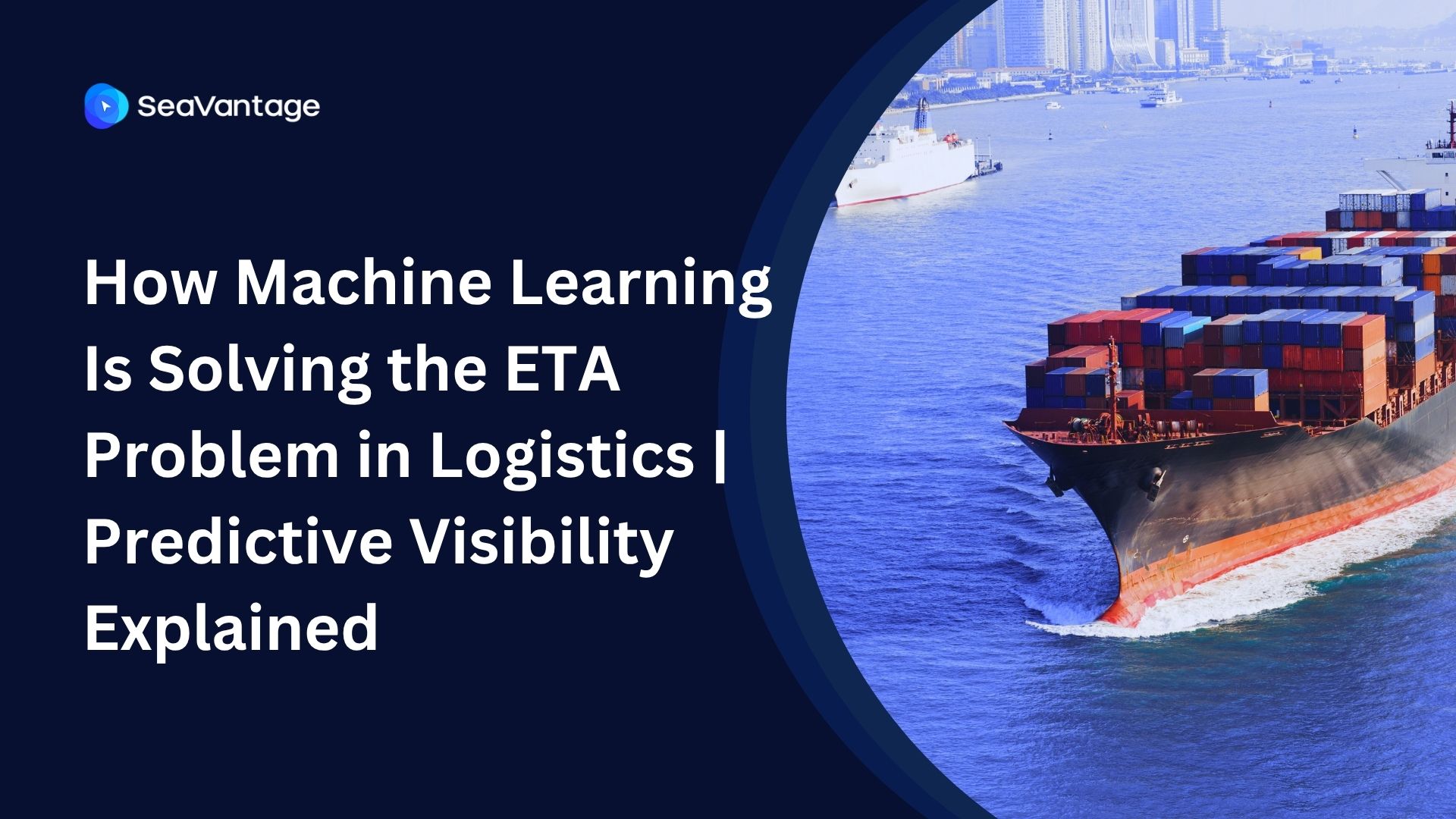B/L Tracking vs Container Tracking: Accuracy, Cost & Visibility Insights
.jpg)
The Visibility Paradox in Modern Logistics
For Logistics Service providers (LSPs), the daily battle against unpredictable ETAs, frustrating gaps in visibility, and rising operational costs is all too familiar. In this environment, cargo tracking isn't just a feature, it's a critical lifeline. But what if the primary tool many LSPs rely on has a hidden breaking point?
While container tracking is a foundational tool and performs well for simple, direct routes, an over-reliance on it becomes a significant liability when logistics get complicated. The common assumption that container tracking is sufficient for end-to-end visibility is being challenged by hard data. This analysis, based on 4.8 billion logistics data points and multiple independent research studies, reveals four truths that provide a framework for re-evaluating your visibility strategy in the face of growing supply chain complexity.
1. The 20% Accuracy Gap: Why Container Tracking Fails When Complexity Rises
Container tracking appears reliable in straightforward scenarios, but its performance plummets precisely when you need it most: during complex, multi-stage journeys.
A comprehensive study by the University of Nevada and Texas A&M University analyzing 1.7 million logistics records uncovered this critical vulnerability. For shipments with a single transshipment, Bill of Lading (B/L) based tracking maintained 97.6% accuracy, while container tracking fell to just 87.3%. With multiple transshipments, the gap widened into a chasm: B/L tracking preserved 94.1% accuracy versus a concerning 75.8% for container tracking. This drop occurs because a container's identifier is tied to a physical asset that can be changed, breaking the chain of custody. In contrast, the B/L is tied to the cargo itself. The researchers identified the core reason for this superior performance:
Researchers attributed this advantage to B/L's function as an integrated identifier that manages the entire cargo journey as a legal document, maintaining visibility regardless of container changes.
2. The 6x Efficiency Mandate: How B/L Tracking Unlocks Workforce Productivity
Productivity in logistics is a constant challenge, and the choice of tracking technology has a direct and significant impact on workforce efficiency. Research from Hochschule Neubrandenburg on logistics productivity revealed a stark difference in output between teams using different systems.
The study found that staff using B/L-based systems processed 300-400 shipments daily. In stark contrast, users relying on container-based systems handled only approximately 50 shipments in the same period. This represents a six-fold productivity advantage, empowering teams to manage significantly higher volumes without increasing headcount. This efficiency gain is rooted in the B/L's ability to manage multiple containers under a single, unified document, which streamlines tracking processes and dramatically reduces the administrative burden on your team.
3. Beyond Per-Container Fees: The 500%+ TCO Difference in Tracking Technology
While per-container fees are easy to track, they obscure a far more significant financial reality revealed in a Total Cost of Ownership (TCO) analysis. The data shows that a shipment-centric approach can lead to cost savings of up to 537.8% compared to asset-based tracking solutions.
A two-year TCO analysis by Hochschule Neubrandenburg broke down the fundamental cost differences:
• Initial Implementation: B/L tracking costs 20−50pershipment∗∗,whereascontainertrackingcancost∗∗550-950 per container.
• Monthly Operations: B/L tracking runs at just 1−5pershipment∗∗,comparedto∗∗25-35 per container for container-based systems.
This isn't just about lower fees; it's a fundamentally more scalable and predictable cost structure. By using a Master B/L, LSPs can eliminate extra container fees, ensuring that costs don't spiral as shipment volumes and complexity grow.
See also: Container Number vs. Master Bill of Lading: Which is Right for Your Supply Chain?
4. The 15x Data Integrity Risk: Where 1 in 4 Updates Disappear
In logistics, reliable data is the foundation of trust and operational stability. An evaluation of data security and integrity by the European Transport Review uncovered a critical gap in reliability between tracking methods, revealing that B/L tracking achieved 98.3% data integrity compared to just 87.2% for container tracking.
This translates to a data loss rate of just 1.7% for B/L systems, compared to a staggering 25-30% for container-based tracking, a more than 15-fold difference in data reliability. In practical terms, this means nearly one in every four critical shipment updates can disappear with container-based systems, leaving you and your clients in the dark. Ultimately, this superior data integrity is the foundation for building a truly resilient supply chain, allowing LSPs to:
"Reduce uncertainty in your supply chain with near-perfect visibility of shipment locations."
Conclusion: Is Your Tracking Strategy Ready for the Future?
In an era of increasing supply chain complexity, the data presents a cohesive narrative. It isn't just about accuracy (Point 1); it's about how that accuracy prevents the data leaks (Point 4) that force your teams to waste time, destroying productivity (Point 2) and inflating your true operational costs (Point 3). In today's landscape, real-time visibility is no longer optional, it’s essential.
As supply chains grow more complex, is relying solely on container tracking a risk your business can afford to take? In the logistics landscape of tomorrow, the difference between thriving and merely surviving will be measured in the accuracy, efficiency, and data integrity of your visibility platform.
2025년 9월, 주요 글로벌 항만에서 어떤 운송사가 가장 긴 선박 체류 시간을 기록했는지 확인해보세요. 트렌드를 비교하고, 지연을 파악하며, 전체 항만 데이터를 통해 운송 전략을 최적화할 수 있습니다.
2025년 8월, 주요 글로벌 항만에서 어떤 운송사가 가장 긴 선박 체류 시간을 기록했는지 확인해보세요. 트렌드를 비교하고, 지연을 파악하며, 전체 항만 데이터를 통해 운송 전략을 최적화할 수 있습니다.
2025년 7월, 주요 글로벌 항만에서 어떤 운송사가 가장 긴 선박 체류 시간을 기록했는지 확인해보세요. 트렌드를 비교하고, 지연을 파악하며, 전체 항만 데이터를 통해 운송 전략을 최적화할 수 있습니다.
Discover why container tracking breaks under complexity. Learn how B/L-based visibility improves ETA accuracy, boosts productivity, cuts TCO, and reduces data loss.
Get the latest November 2025 ocean freight insights. Learn the five market shifts shaping carrier strategy, congestion risks, trade tensions, and shipper planning.
Discover how machine learning is fixing the billion-dollar ETA problem by delivering accurate, predictive visibility for global supply chains.



.svg)






.png)